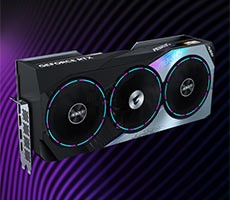
Security analyst Sam Croley is a specialist in password cracking, and has just found a new best friend: the NVIDIA GeForce RTX 4090. Impressively, the Ada Lovelace architecture flagship graphics card is over twice as fast at password cracking as its direct Ampere architecture predecessor. What this means in practical terms is that someone
Source: Hot Hardware – Just A Few GeForce RTX 4090 Cards Can Crack Your Passwords In Under An Hour
Monthly Archives: October 2022
The new $129 Apple TV 4K has an A15 chip, 64GB of storage and HDR10+ support
Last year’s Apple TV 4K wasn’t much of an update internally, though the new Siri remote made up for that. But now, Apple finally has some worthy upgrades for its streaming box. That includes faster performance with its A15 Bionic chip, as well as support for HDR10+, which uses metadata to dynamically optimize HDR10 content (similar to Dolby Vision). Best of all, the new Apple TV 4K has a lower starting price of $129 (down from $179!), as well as double the base memory (64GB instead of 32GB).
If you want more storage, you can also snag the 128GB Apple TV 4K for $149. That model also adds gigabit Ethernet, as well as support for the Thread IoT standard. Both new Apple TVs also support Wi-Fi 6, which should greatly expand their wireless reception. They can also act as smart home hubs for HomeKit devices, like previous Apple TVs. The Siri Remote has all of the features we loved last year, except it now charges over USB-C.
No matter which Apple TV 4K you’re looking at, they’re both significant upgrades from the previous model. Apple says the A15 Bionic is around 50 percent faster, with 30 percent better GPU performance. That should come in handy if you’re the rare person actually playing Apple TV games.
You can pre-order the revamped Apple TV 4K today, and it’ll be available on November 4th.
Source: Engadget – The new 9 Apple TV 4K has an A15 chip, 64GB of storage and HDR10+ support
Meta grudgingly agrees to sell Giphy after admitting defeat in UK battle
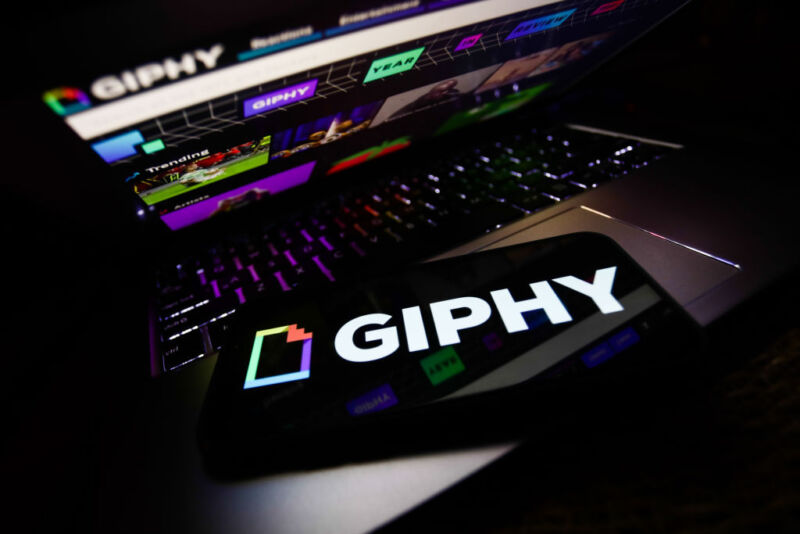
Enlarge (credit: NurPhoto / Contributor | NurPhoto)
Considering that Meta bought WhatsApp and Instagram without issue, it may come as a surprise that Meta’s purchase of Giphy will be blocked. But that’s the situation, as the United Kingdom’s Competition and Markets Authority (CMA) has now ordered Meta to sell Giphy.
The decision comes two years after the merger came under the increasingly intense scrutiny of UK regulators. Fighting every step of the way, Meta has since said in a statement to Reuters that although it’s “disappointed” in the decision, it will “accept today’s ruling as the final word on the matter.”
Among the reasons why Meta must sell Giphy are the CMA’s concerns that Meta and Giphy dominate the GIF marketplace and that Meta could cut off competitors from accessing Giphy content. Meta could also possibly change its terms and charge its competitors exorbitantly for access. This, the CMA feared, threatened to increase Facebook’s already dominant presence in the social media marketplace by pushing users to prefer the platform where they can access the best GIFs. The regulator noted that 73 percent of the time UK residents spend on social media is on Facebook.
Read 18 remaining paragraphs | Comments
Source: Ars Technica – Meta grudgingly agrees to sell Giphy after admitting defeat in UK battle
Amazon warehouse in Albany votes against unionization
Workers are still struggling to unionize Amazon warehouses in New York State. Staff at the company’s Albany-area ALB1 warehouse have voted 406-206 against joining a union. The 31 challenged ballots aren’t enough to alter the outcome. Don’t expect a repeat of the Alabama vote, where there were enough disputed ballots to potentially alter the results.
As with past votes, Amazon conducted an anti-union campaign that included discouraging posters and displays in prominent locations around the ALB1 facility. While the extent of the campaign isn’t yet known, the company has also been accused at other warehouses of blocking pro-union pamphlets, retaliating against labor organizers and generally interfering with elections. ALB1 employees have been trying to form a union since at least May, and succeeded with an August petition to the National Labor Relations Board (NLRB) to hold an election.
Amazon told Engadget it was happy with the vote and felt the absence of a union was the “best arrangement” for both team members and customers. In a statement, the ALU said this was a “sham election” and accused Amazon of violating labor law through tactics that included intimidation and retaliation. While the union didn’t outline its formal response to the vote, it stressed that this “won’t be the end” of the organization at ALB1.
Pro-union forces haven’t had many victories at Amazon buildings. While those at the JFK8 warehouse in Staten Island voted to unionize, others at the nearby LDJ5 opted against it. That’s on top of the failed Alabama vote and Amazon’s reported attempts to quash labor movements in places like Maryland’s DMD9 facility. While there’s still a mounting labor movement that has prompted walkouts and impromptu strikes, they haven’t had much practical impact.
Amazon has occasionally addressed the concerns of workers by raising wages. It has a history of opposing reforms to working conditions, though. For now, the company is only expected to improve conditions and reinstate fired workers in response to NLRB-linked orders and government legislation.
Source: Engadget – Amazon warehouse in Albany votes against unionization
Xbox Game Pass Is A Huge Treat For Horror Fans This Month

It was only a couple of weeks ago that we updated our guide to the best Halloween games on Game Pass, so naturally Xbox has gone and made it all out of date by announcing a slew of spoopy titles its add to the subscription service. With names like Amnesia and Soma, get ready for the top-level jibblies. Oh, and A…
Source: Kotaku – Xbox Game Pass Is A Huge Treat For Horror Fans This Month
Apple's New iPad Pro Is Missing the iPad 10's Best Feature
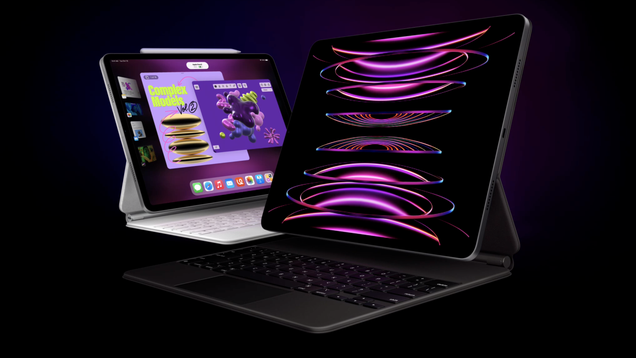
As long as I’ve used iPads, I’ve wondered: Why the camera on the short side? It made some sense in the days before we started using iPads as replacement laptops: If you’re coming from a smartphone, it feels more natural to hold an iPad in portrait for video calls. But times have changed, and many of us keep our iPads…
Source: LifeHacker – Apple’s New iPad Pro Is Missing the iPad 10’s Best Feature
Apple Finally Moved the Camera on Its Colorful New iPads—But Not on the New iPad Pro
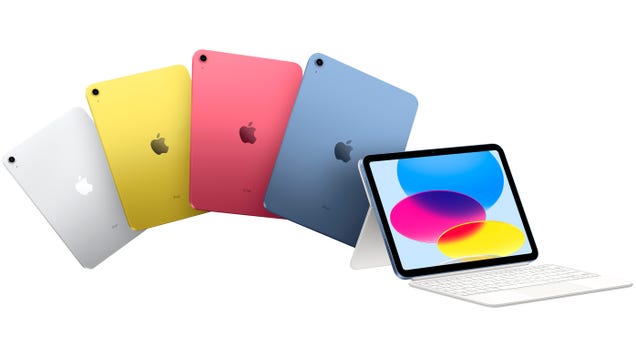
Saving everyone the agony of a six-hour-long presentation, Apple has quietly announced a colorful new 10th-generation iPad with a relocated selfie camera and a sixth-generation iPad Pro upgraded with the company’s M2 chip that debuted in MacBooks earlier this year.
Source: Gizmodo – Apple Finally Moved the Camera on Its Colorful New iPads—But Not on the New iPad Pro
iPadOS 16 and macOS Ventura arrive on October 24th
You’ll finally be able to get your hands on iPadOS 16 next Monday, October 24th, Apple announced this morning. The new OS includes support for Apple’s Stage Manager multi-tasking feature, which should make it easier to move between multiple apps on your iPad. That feature is also headed to macOS Ventura, which launches on the same day. iPadOS 16 is landing alongside Apple’s new iPad Pro, equipped with an M2 chip and Wi-Fi 6E, and will also later arrive on the revamped (and more expensive) standard iPad. You’ll need a fifth-gen iPad or iPad Mini, any iPad Pro, or a third-gen iPad Air to install the new OS.
In our preview of iPadOS 16, we found that Apple is doing a better job of marrying it’s excellent hardware with better software. It’s no wonder the new iPad also has a redesigned Magic Keyboard Folio—iPad OS 16 will make Apple’s tablet a far better laptop replacement for some users. As for macOS Ventura, it’s a more significant update than last year’s OS, though Stage Manager will likely be a controversial feature for some users. Personally, I found it better than moving between icons on the macOS dock, and I appreciated that it was easy to turn Stage Manager on and off as necessary.
Source: Engadget – iPadOS 16 and macOS Ventura arrive on October 24th
5 Most Used Touch Commands in Linux With Examples
The touch command is a standard command in Linux operating system used on daily basis by the system administrators, developers, and other users familiar with the Linux command line.
Source: LXer – 5 Most Used Touch Commands in Linux With Examples
Arturia MiniLab 3 hands-on: A big upgrade for a budget MIDI controller
Look, there’s no shortage of affordable MIDI controllers out there. And if you stick to the big brands, it’s kinda hard to go wrong. Arturia itself even has multiple budget offerings that are all pretty solid in their own right. One of its most popular, the MiniLab is getting a pretty major update that includes changes to the controls, an arpeggiator, and the addition of a MIDI port – and full-sized one at that.
The MiniLab 3 doesn’t look terribly different from its MKII predecessor. Its corners are slightly more rounded and it ditched eight of its 16 encoders for four sliders. But otherwise, it keeps the same general setup. You still get 25 velocity sensitive keys, eight velocity sensitive RGB pads, as well as mod and pitch touch strips above the keyboard. And there’s still faux wood panels on the side that give it a little bit of a unique flair.
The hardware itself is what you’d expect for $109. It’s plasticky, but not cheap feeling. The knobs and sliders have a decent amount of resistance and the keybed is slightly springy. All of this is basically par for the course, and other similarly priced controllers have their own pros and cons. The pads and keys on the MiniLab are better than the LaunchKey Mini MK3, but its arpeggiator isn’t as unique and its integration with Ableton Live isn’t as tight. While the Akai MPK Mini MK3 has far and away the best pads of the bunch, its keybed is nothing to write home about and its integration with DAWs is extremely basic.
The integration with DAWs has been improved on the MiniLab 3, though. Arturia has put additional effort into improving this over the last couple of years and we’re starting to see some of the fruits of that labor. The available controls have been greatly expanded for many apps with scripts that are customized for specific DAWs like Ableton Live or FL Studio.
The arpeggiator is pretty solid. I don’t think it’s quite as interesting as the one on the LaunchKey Mini MK3, but it’s hardly barebones. It has six different playback modes, swing and gate controls, as well as your standard octave and time division options. There’s also a chord mode that lets you play full rich chords with a single finger.
If you’re tight on space and don’t plan to drag your controller out and about with you, the MiniLab 3 is an excellent option. While Arturia calls it portable, it’s just big enough to be a little unwieldy in a bag. And I have some concerns about how those faders would hold up getting jostled around with other stuff. If portability is your primary concern either Novation’s LaunchKey Mini or Arturia’s MicroLab are probably better bets. But if you just want the most controls in the smallest amount of space while also getting solid software integration – especially with Arturia’s Analog Lab – then the MiniLab is the way to go.
Source: Engadget – Arturia MiniLab 3 hands-on: A big upgrade for a budget MIDI controller
Arturia’s MiniFreak is a weird-but-powerful digital synth at a great price
When people ask what their first hardware synth should be, I often recommend Arturia’s MicroFreak. Unless you absolutely have your heart set on an analog instrument, I think it offers the most versatility and the best bang for your buck. It has over a dozen different synth engines, an analog multimode filter, a mod matrix for putting together complex patches, plus it’s routinely updated with new features. Sure, it needs the assistance of external effects to really and its touchplate keyboard is a bit controversial, but there’s no denying it offers a lot for just $349.
The little digital weirdo has proven so successful that Arturia decided to make an even more powerful synth, built on the same core. The MiniFreak has double the oscillators, six voices instead of four, built-in effects and a more traditional keyboard. It’s a robust midrange offering with a reasonably low $599 price. That puts it right up against other offerings like the Hydrasynth Explorer ($599) and the Korg Minilogue ($530). But, as is usually the case with music gear, there’s no one right choice here. So let’s explore who might want the MiniFreak and why.
If you’re at all familiar with the MicroFreak, then you already have a pretty good idea of what to expect here – just bigger and more complex. The oscillators on the MiniFreak are the same, just now there are two per voice so your pads can be a little thicker. And you can add some evolution by layering two different engines – say Bass from Noise Engineering for some upfront punch, and a virtual analog voice that comes in after.
Just like its predecessor, the MiniFreak is a digital / analog hybrid synth that combines digital oscillators with an analog filter and digital effects. As solid as the virtual analog engine and analog filters are though, it’s not going to fool well trained ears. You can coax some decent warmth and instability out of it, but it’s decidedly digital. For some, that might be a deal breaker – those people are frankly wrong and missing out. But, if you’re 100-percent convinced only analog will do, feel free to bail out now.
The multi-engine synth core of the MiniFreak is incredibly versatile, covering everything from basic FM, to Karplus-Strong string modeling, to vocal synthesis and rave-ready superwaves. There are a couple of notable omissions from the MicroFreak though, that will hopefully make their way over in a firmware update. As of now there is no vocoder or custom wavetables available on the MiniFreak.
That being said, it can process other instruments by connecting them to the audio in jack on the back and feeding that through the built in filter and effects. Plus there’s a wave folder and bitcrusher specifically built-in to the incoming audio “oscillator.” Oscillator two also has a handful of unique digital filters and effects that you can use to shape sounds from oscillator one, including Destroy, ring modulation, a comb filter and more. This makes the MiniFreak not just a versatile synth, but also a pretty solid effects processor. You could easily connect a Moog, a guitar, or even a microphone and create entirely new textures that weren’t possible before. You can go completely overboard too, using the bit crusher on the incoming audio, then use the destroy module to bit crush your signal further, then filling up all three effects slots with more bit crushers!
The digital engine does have its strengths and weaknesses. It can handle bass and leads just fine, but it really shines on keys, plucks and weirdo sound effects. The MicroFreak was a passable pad machine, but it always sounded a bit thin. By adding a second oscillator, the MiniFreak is able to beef those up and pads become one of its strong suits. It can get a little muddy at lower frequencies, but in general it sounds great, especially if your tastes err towards cold and gritty textures.
The new digital effects section really helps complete the package. Whereas the MicroFreak often sounded a little lonely without some external effects, its big sibling is able to create thick epic atmospheres right out of the box. There are three independent effect slots, with 10 effects to choose from including multiple reverb types, several distortion styles, chorus and compression.
In general Arturia plays things pretty conservative here, sticking to bread and butter effects. You won’t find crazy pitch shifting delays or super sparkly reverb. But that’s ok. My one wish is that there was some sort of equivalent to the lo-fi effect found on the Hydrasynth. You can create something similar by patching up a random LFO to the chorus and or pitch, and messing with the EQ, but having it as an easy-to-use one stop effect would be great.
The ability to patch all these various parts together is another thing that makes the Freak line easy to get lost in. The mod matrix on the MiniFreak is quite powerful, allowing you to quickly connect either of the two LFOs, two envelopes or various other modules to each other. In addition to the seven sources and four standard destinations in the mod matrix there are nine assignable destinations that can be almost anything. You can use the LFO to change the ratio in FM engine, or the delay time, for example.
The patching and modulation possibilities aren’t as robust as they are on the ASM Hydrasynth with its five LFOs and envelopes, but they’re still pretty robust. And definitely more flexible than what you’d find on most analog synths in this price range (at least ones with a keyboard).
Building patches from scratch and connecting things in the mod matrix is incredibly straight forward. Arturia’s interface feels intuitive and rarely overwhelming, even with its large collection of shift functions. Most things are labeled clearly and laid out in a way that (mostly) makes sense. There are a few head-scratchers though, like the lack of an obvious way to unassign parameters from the two macro controls, or what in hell the images of increasingly large frogs have to do with the octave range of the arpeggiator.
The arpeggiator is excellent, by the way, with a host of different modes, the ability to repeat or ratchet notes in the arp, and a mutate function for adding a dash of randomness. The 64-step sequencer feels more polished than the one on the MicroFreak, but I do wish that you could access the mutate, ratchet and repeat functions. At least there’s still Spice and Dice, which also randomize certain elements of your sequences and arpeggios. These are really great ways of coming up with new melodic ideas when you’re feeling stuck. Just play in a simple arpeggio, then start rolling the dice, pressing mutate and messing around with the various modes until you have something new and unique.
While not unimportant, I did save the physical hardware itself for last because, well, I can forgive a lot if the sound engine is satisfying. For the most part, the MiniFreak looks like what you’d expect from a super-sized MicroFreak. The white, dark gray and orange motif is here, though some of the graphical flourishes have been subdued – there’s no floral pattern over the keyboard. While the case is mostly plastic, it feels solid and is actually a little heavier than I anticipated. I remain indifferent to touchstrips in place of actual mod and pitch wheels, but I’ve learned to accept them.
One of the most obvious changes for the MiniFreak though, is graduating to a 37-key traditional keyboard, as opposed to the touch plate on the MicroFreak. I know that I’m probably in the minority here, but I’m a little sad to see it go. Sure, it made it a little tougher to play just by feel, but it was a unique playing experience and I really enjoyed its implementation of polyphonic aftertouch.
The MiniFreak’s keyboard is fine. It feels similar to the KeyStep Pro, but a little springier. It has aftertouch, but not polyphonic aftertouch. And with the move to a traditional keyboard, Arturia decided to ditch the CV controls on the back of the synth. So you’re not going to be integrating this into your Eurorack rig. There are full-sized five-pin MIDI In / Out / Thru ports on the back at least. And stereo outs for taking full advantage of the digital effects.
One last thing to mention: There is going to be a MiniFreak V – a dedicated VST plugin that integrates the instrument into your DAW. At least at first though, it won’t be available separately. It will only be available to owners of the MiniFreak.
The MiniFreak is, at the end of the day, a beefed up MicroFreak. And there’s nothing wrong with that. It’s a quirky digital synth with a ton of versatility and multiple sound engines. If you want to get lost in sound design and want as many modulation options as possible, then the Hydrasynth might be the better choice for you – though the MiniFreak is certainly not lacking in those departments. And if you simply must have an analog synth, then go for Korg’s Minilogue. But if you’re looking for the broadest range of sounds, and a little instant gratification, then the MiniFreak is certainly a strong contender for your synth dollar.
Source: Engadget – Arturia’s MiniFreak is a weird-but-powerful digital synth at a great price
Activision Bans Top Call of Duty Twitch Streamer From $100,000 Tourney Over Marriage Prank

Activision hosted a Call of Duty tournament this weekend, and the top competitive player was noticeably absent from the lineup. In a now-deleted tweet, Doug “Censor” Martin revealed that the publisher had banned him for competing in Fortune’s Keep, citing that he had “harassed [Nadia Amine].” The ruling likely refers…
Source: Kotaku – Activision Bans Top Call of Duty Twitch Streamer From 0,000 Tourney Over Marriage Prank
Apple drops USB-C and home button from the base iPad, announces M2 iPad Pro
-
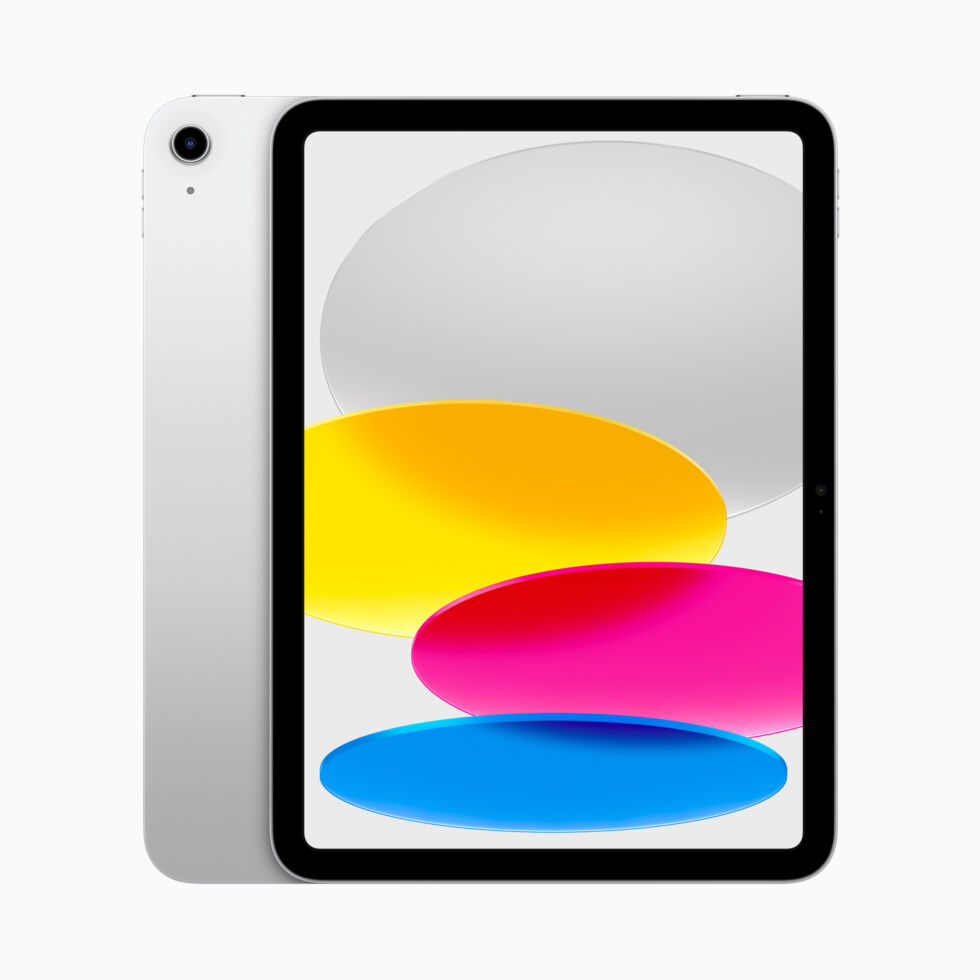
The new base iPad in silver. [credit:
Apple ]
Today, Apple surprise-announced several new products without much fanfare beyond a store page update and a press release, and three of them are iPads: two new iPad Pro models and a redesigned entry-level iPad.
Since the iPad Pro is mainly getting a spec bump, the big story today is the redesigned base iPad. Apple’s entry-level iPad has maintained the same basic, home-button-equipped design for years, but that changes today.
The redesigned iPad has a 10.9-inch, 2360×1640-pixel LCD display that maxes out at 500 nits of brightness. Like the iPad Air and iPad Pro, it lacks a home button, as the screen extends somewhat close to the edges of the device on all sides. Touch ID is now housed in the top button on the edge of the tablet.
Read 14 remaining paragraphs | Comments
Source: Ars Technica – Apple drops USB-C and home button from the base iPad, announces M2 iPad Pro
Apple Music's Immersive Audio Tech Calls Shotgun On Mercedes-Benz Vehicles

Apple and Mercedes Benz have joined forces to bring Spatial Audio to your driving adventures. Mercedes-Benz will offer the first automobiles to include the native experience of Apple’s Spatial Audio with support for Dolby Atmos.
Many of us love to crank up our music as we drive down the road. Blasting a favorite playlist can make the most
Source: Hot Hardware – Apple Music’s Immersive Audio Tech Calls Shotgun On Mercedes-Benz Vehicles
Meg Donnelly | First Fandoms
Musk to seek Starlink donations after withdrawing request for Ukraine funding

Enlarge / Starlink satellite dish seen on September 25, 2022 in Izyum, Kharkiv region, amid the Russian invasion of Ukraine. (credit: Getty Images | Yasuyoshi Chiba)
The Pentagon has reportedly held talks with SpaceX about funding Starlink in Ukraine, though SpaceX CEO Elon Musk wrote in a tweet yesterday that “SpaceX has already withdrawn its request for funding.” Musk also said he’ll seek Starlink donations for places in need.
“The Pentagon and SpaceX have held discussions about funding for the company’s Starlink Internet service in Ukraine, a senior military official said Monday, but Elon Musk indicated that SpaceX is no longer seeking that support,” The Wall Street Journal wrote. There’s still a chance the Pentagon could pay for Starlink from a Ukraine-specific fund that is aiding the country’s defense against Russia’s invasion, according to a Politico report.
Musk wrote in another tweet that “25,300 terminals were sent to Ukraine, but, at present, only 10,630 are paying for service.” He also wrote that SpaceX “will add a donate option to Starlink” for those who “want to donate Starlinks to places in need.”
Read 8 remaining paragraphs | Comments
Source: Ars Technica – Musk to seek Starlink donations after withdrawing request for Ukraine funding
AMD, Google, Microsoft & NVIDIA Announce "Caliptra" Open-Source Root of Trust
AMD, Google, Microsoft, and NVIDIA have used this week’s OCP Global Summit to announce Caliptra as their open specification for a silicon Root-of-Trust (ROT) to be found with future CPUs / SoCs, GPUs, NICs, SSDs, and other hardware components.
Source: Phoronix – AMD, Google, Microsoft & NVIDIA Announce “Caliptra” Open-Source Root of Trust
Microsoft Becomes Latest Tech Firm To Cut Staff
Microsoft announced layoffs across multiple divisions on Monday. From a report: Microsoft declined to say how many jobs had been cut, but a source said the layoffs numbered under 1000. The cuts occurred across a variety of levels, teams and parts of the world. Multiple laid-off workers turned to Twitter and Blind, among other online forums, to share that their job had been cut.
Read more of this story at Slashdot.
Source: Slashdot – Microsoft Becomes Latest Tech Firm To Cut Staff
OpenPOWER Foundation Demoes The LibreBMC POWER-Based Open-Source BMC
Last year the OpenPOWER Foundation announced LibreBMC as a POWER-based open-source BMC and now they have progressed to the point of actually demoing this BMC backed by a fully open-source software stack…
Source: Phoronix – OpenPOWER Foundation Demoes The LibreBMC POWER-Based Open-Source BMC
How to Label Your Pill Package So You Never Miss a Dose

If you take a lot of medications, you probably have some systems in place to make sure you won’t miss one—like an organizer that divides pills according to the day and time they’re supposed to be taken or a series of reminders on your phone. But what about when you just have one set of pills, and you don’t need a…
Source: LifeHacker – How to Label Your Pill Package So You Never Miss a Dose

